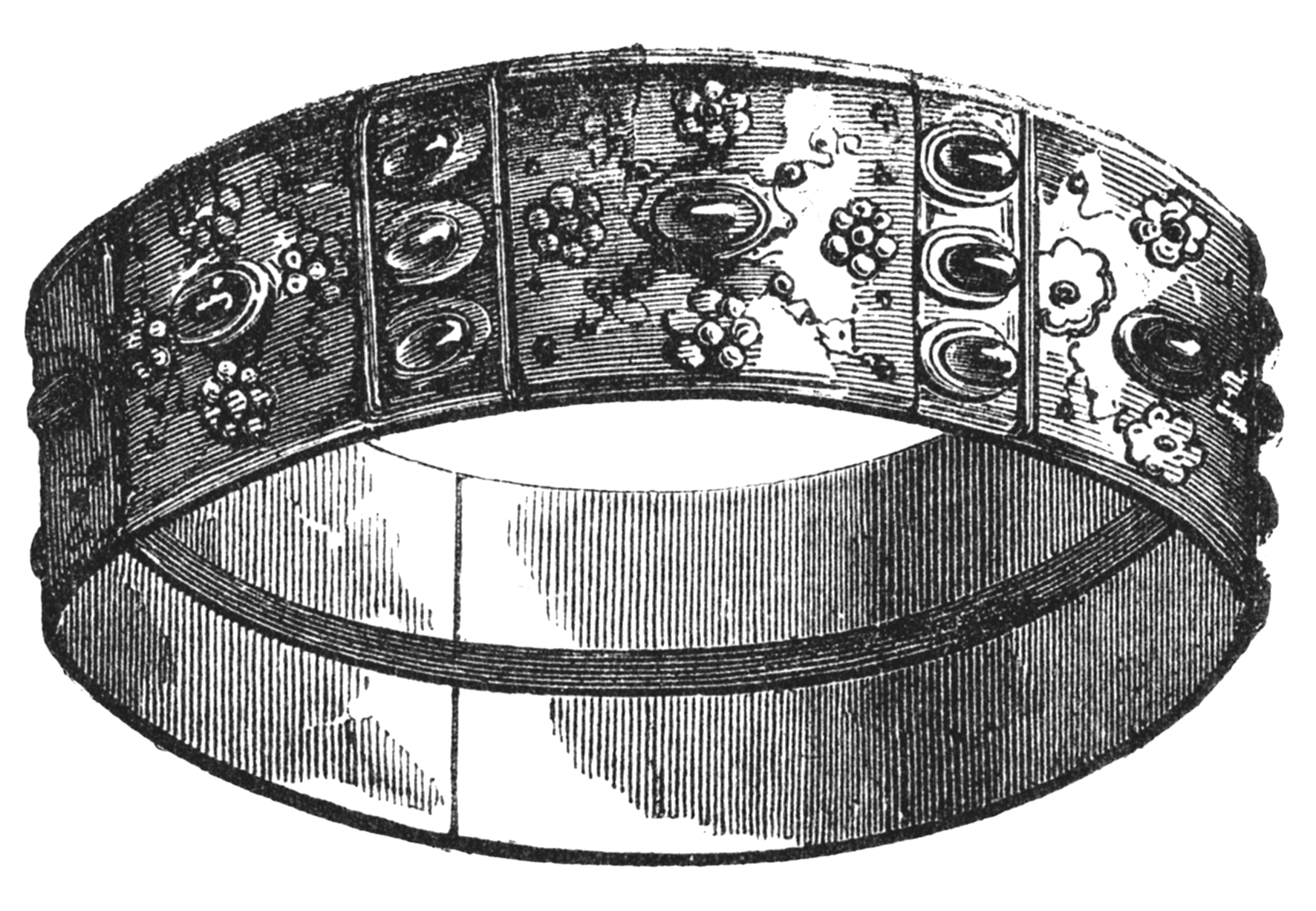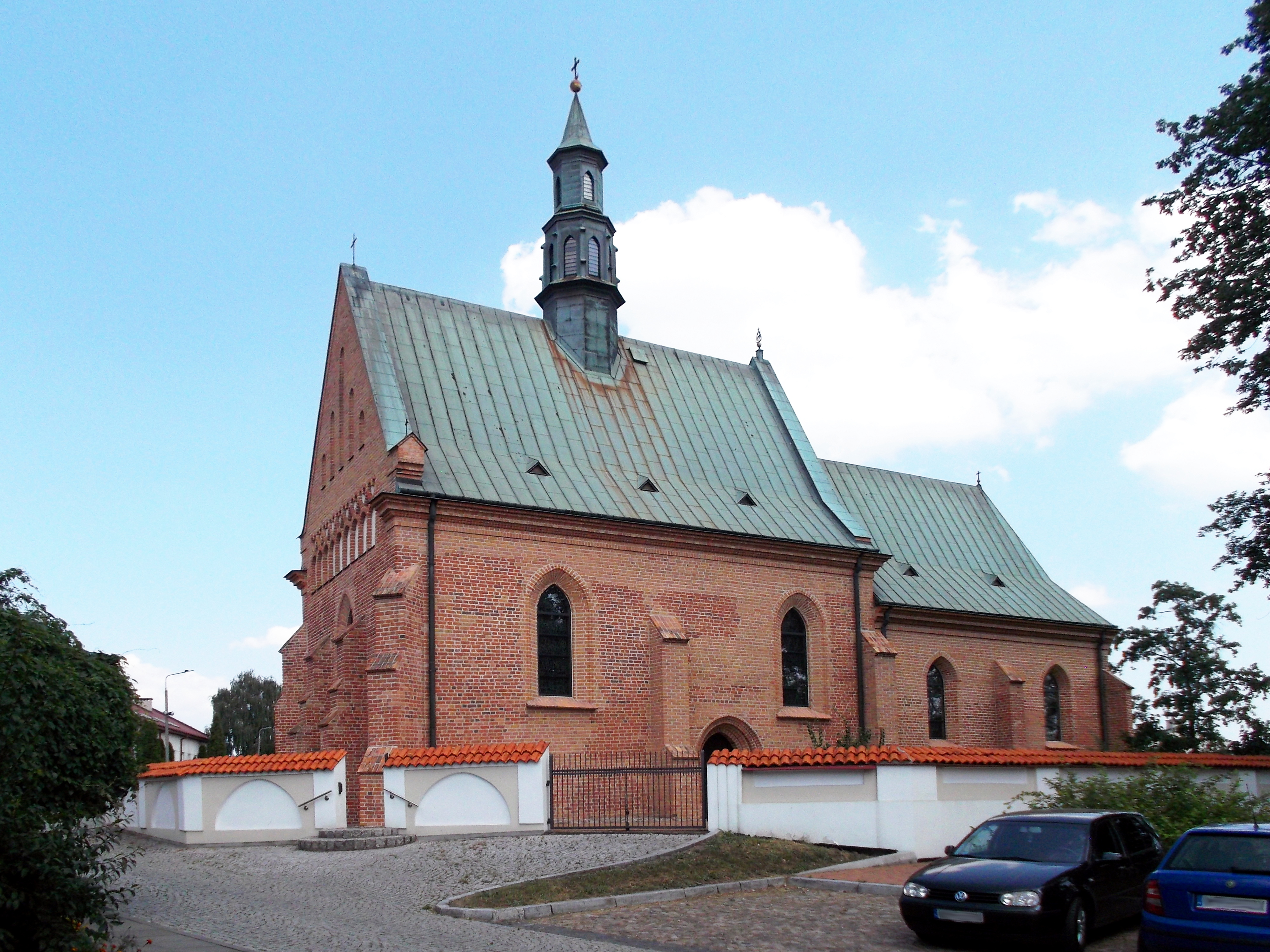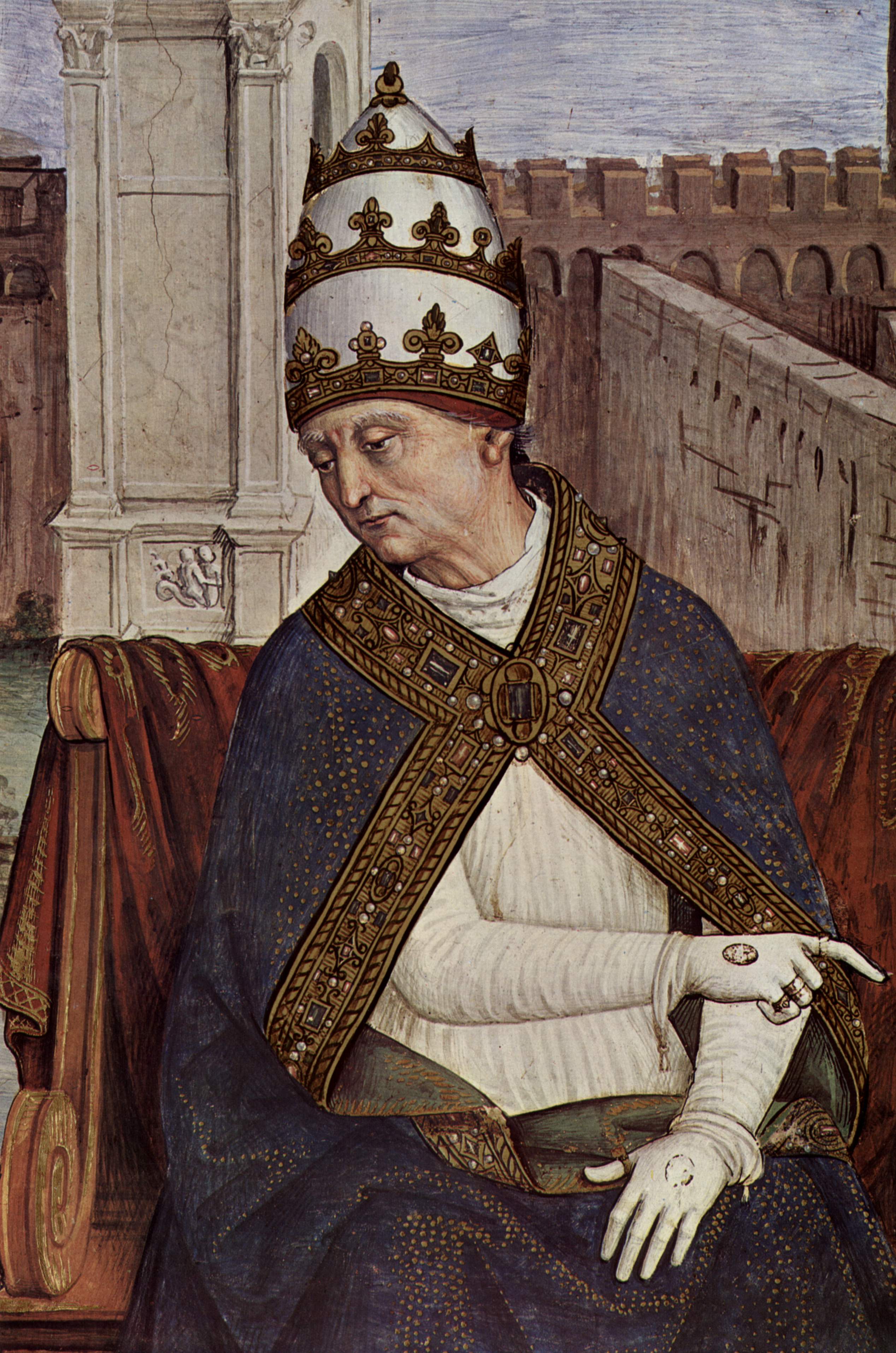|
Hedwig Jagiellon, Duchess Of Bavaria
Hedwig Jagiellon (; , ; 21 September 1457 – 18 February 1502), baptized as Hedwigis, was a princess of the Kingdom of Poland and of the Grand Duchy of Lithuania, and member of the Jagiellonian dynasty. She was Duchess of Bavaria by marriage to George, Duke of Bavaria. Born in Kraków, she was the eldest daughter of King Casimir IV of Poland and Archduchess Elisabeth of Austria. Life In 1468, her hand was requested by Matthias Corvinus, King of Hungary, who on 8 April of that year sent Protas Černohorský z Boskovic, Bishop of Olomouc as his representative. With this marriage, the Hungarian ruler hoped to gain a valuable ally against his rival for the Bohemian throne, George of Poděbrady. At the same time, negotiations began for a marriage between the second daughter of Casimir IV, Sophia with Archduke Maximilian of Austria, son and heir of Emperor Frederick III; thus, the Polish King would guarantee that future rulers of Austria and Hungary would be his descendants. Th ... [...More Info...] [...Related Items...] OR: [Wikipedia] [Google] [Baidu] |
List Of Bavarian Consorts
There have been three kinds of Bavarian consorts in history: duchesses, electresses and queens. Most consorts listed are duchesses. The first ever consort of Bavaria was Waldrada in the 6th century. The final consort was Maria Theresa of Austria-Este (1849–1919), Maria Theresia of Austria-Este in 1913. The longest serving house was the Wittelsbach dynasty, who played a major role in Bavarian history. During the medieval period under the Wittelsbach dynasty, Bavaria was split into two parts, Upper and Lower Bavaria. This meant that there may have been more than one Duchess of Bavaria at the same time, due to messy inheritance among heirs. Three of the break-away Wittelsbach families were: Landshut, Munich and Ingolstadt. Since 555 there have been 99 Bavarian consorts: 78 duchesses, 11 queens, 10 electresses and one margravine. The number does not add up because Elizabeth of Lorraine and Caroline of Baden, held two titles. There were a few consorts that married twice, usually t ... [...More Info...] [...Related Items...] OR: [Wikipedia] [Google] [Baidu] |
Sophia Jagiellon, Margravine Of Brandenburg-Ansbach
Sophia Jagiellon (; ; 6 May 1464 – 5 October 1512) was a princess of the Kingdom of Poland and of the Grand Duchy of Lithuania, member of the Jagiellonian dynasty, great-granddaughter of Emperor Sigismund and by marriage Margravine of Brandenburg-Ansbach and Brandenburg-Kulmbach. Born in Kraków, she was the second daughter of Grand Duke of Lithuania and King Casimir IV of Poland and his wife Archduchess Elisabeth of Austria, daughter of the German king Albrecht. She was named after her paternal grandmother, Sophia of Halshany, Queen of Poland. Sophia was baptised by John Gruszczynski, Bishop of Kraków. There is no information available concerning Sophia's upbringing or education. Life Betrothals In 1468, Sophia was first betrothed to Archduke Maximilian of Austria, son and heir of Emperor Frederick III. Then, on 8 April of the same year, Protas Černohorský of Boskovice, Bishop of Olomouc, appeared as a representative of King Matthias Corvinus of Hungary, asking the h ... [...More Info...] [...Related Items...] OR: [Wikipedia] [Google] [Baidu] |
Radom
Radom is a city in east-central Poland, located approximately south of the capital, Warsaw. It is situated on the Mleczna River in the Masovian Voivodeship. Radom is the fifteenth-largest city in Poland and the second-largest in its province with a population of 196,918 (30.06.2023) Radom was a significant center of administration, having served as seat of the Polish Crown Council which ratified the Pact of Vilnius and Radom between Lithuania and Poland in 1401. The Nihil novi and Łaski's Statute were adopted by the Sejm at Radom's Royal Castle in 1505. In 1976, it was a center of the June 1976 protests. Despite being part of the Masovian Voivodeship, the city historically belongs to Lesser Poland. The city is home to the biennial Radom Air Show, the largest air show in the country, held during the last weekend of August. "Radom" is also the popular unofficial name for a semiautomatic FB Vis pistol, which was produced from 1935 to 1944 by Radom's Łucznik Arms Factory. ... [...More Info...] [...Related Items...] OR: [Wikipedia] [Google] [Baidu] |
Łęczyca
Łęczyca (; in full the Royal Town of Łęczyca, ; ; ) is a town of inhabitants in central Poland. Situated in the Łódź Voivodeship, it is the county seat of the Łęczyca County. Łęczyca is a capital of the historical Łęczyca Land. Origin of the name The town was probably named after a West Slavs, West Slavic (Lechites, Lechitic) tribe called Leczanie, which inhabited central Poland in the early Middle Ages. Some scholars however claim that the town was named after an Old Polish word łęg, which means a swampy plain. In medieval Latin documents, Łęczyca is called Lonsin, Lucic, Lunciz, Lantsiza, Loncizia, Lonsitia and Lunchicia. In the early 12th century, Gallus Anonymus called Łęczyca "Lucic", and in 1154, Arab geographer Muhammad al-Idrisi named it Nugrada, placing it among other main towns of the Kingdom of Poland (1025–1385), Kingdom of Poland, such as Kraków, Sieradz, Gniezno, Wrocław and Santok. Location Łęczyca lies in the middle of the county, an ... [...More Info...] [...Related Items...] OR: [Wikipedia] [Google] [Baidu] |
Louis IX, Duke Of Bavaria
Louis IX (, also known as Louis the Rich; 23 February 1417 – 18 January 1479) was Duke of Bavaria-Landshut from 1450. He was a son of Henry XVI the Rich and Margaret of Austria. Louis was the founder of the University of Ingolstadt (now the University of Munich). Biography Louis succeeded his father in 1450. He was the second of the three famous rich dukes who reigned in Bavaria-Landshut in the 15th century. Their residence was Trausnitz Castle in Landshut, a fortification which attained enormous dimensions. Louis invaded the imperial free cities of Dinkelsbühl and Donauwörth in 1458, and disputed with Frederick III, Holy Roman Emperor until peace was made in Prague in 1463. In 1462, Louis defeated his enemy Albert III, Margrave of Brandenburg, who tried to extend his influence in Franconia in the battle of Giengen. Louis expelled all Jews who rejected baptism from his duchy. Louis founded a university in Ingolstadt in 1472, which was moved to Landshut in ... [...More Info...] [...Related Items...] OR: [Wikipedia] [Google] [Baidu] |
Albert IV, Duke Of Bavaria
Albert IV (15 December 1447 – 18 March 1508; ) was Duke of Bavaria-Munich from 1467, and duke of the reunited Bavaria from 1503. Biography Albert was a son of Albert III, Duke of Bavaria and Anna of Brunswick-Grubenhagen-Einbeck. He was born in Munich. After the death of his older brother John IV, Duke of Bavaria he gave up his spiritual career and returned from Pavia to Munich. When his brothers Christoph and Wolfgang had resigned Albert became sole duke, but a new duchy Bavaria- Dachau was created from Bavaria-Munich for his brother Duke Sigismund in 1467. After Sigismund's death in 1501, it reverted to Bavaria-Munich. The marriage of Kunigunde of Austria to Albert IV was a result of intrigues and deception, but must be counted as a defeat for Emperor Frederick III. Albert illegally took control of some imperial fiefs and then asked to marry Kunigunde (who lived in Innsbruck, far from her father), offering to give her the fiefs as a dowry. The Emperor agreed at firs ... [...More Info...] [...Related Items...] OR: [Wikipedia] [Google] [Baidu] |
Vladislaus II Of Hungary
Vladislaus II, also known as Vladislav, Władysław or Wladislas (; 1 March 1456 – 13 March 1516), was King of Bohemia from 1471 to 1516 and King of Hungary and King of Croatia from 1490 to 1516. As the eldest son of Casimir IV Jagiellon, he was expected to inherit the Kingdom of Poland, Crown Kingdom of Poland and adjacent Grand Duchy of Lithuania. George of Poděbrady, the Hussites, Hussite (followers of late 14th-early 15th centuries and pre-Protestantism, Protestant Bohemia, Bohemian Protestant Reformers, Reformer in the Catholic Church, Roman Catholic Church of persecuted theologian John Hus, 1370–1415) ruler of Bohemia, offered to make Vladislaus his heir in 1468. George needed Casimir's support against the rebellious Catholic, Roman Catholic noblemen and their ally King of Hungary Matthias Corvinus. The Diet of Bohemia elected Vladislaus king after George's death, but he could rule only Bohemia proper because Matthias, whom the Roman Catholic nobles had elected king, occ ... [...More Info...] [...Related Items...] OR: [Wikipedia] [Google] [Baidu] |
Frederick Jagiellon
Frederick Jagiellon (; ; 27 April 1468 – 14 March 1503) was a prince of the Kingdom of Poland and of the Grand Duchy of Lithuania, Archbishop of Gniezno, Bishop of Kraków, and Primate of Poland. He was the sixth son and ninth child of Casimir IV Jagiellon, King of Poland and Grand Duke of Lithuania, and his wife Elizabeth of Austria, known as 'Matka Jagiellonów' (Mother of the Jagiellons). Frederick ruled two dioceses with devotion. He cared about the cult of saints, the appropriate education of the clergy, took care of the liturgical life, carried out the diocesan and provincial synods. He also cared about the liturgy, foundations, and restoring of churches, including the restoration of the Kraków and Gniezno Cathedrals. Life Frederick was born in Kraków, and was named after the Holy Roman Emperor Frederick III. His godfather was Protazy, Bishop of Olomouc. After the death of Bishop Jan Rzeszów, he was elected Archbishop of Kraków on 13 April 1488. His father sought t ... [...More Info...] [...Related Items...] OR: [Wikipedia] [Google] [Baidu] |
Teutonic Order
The Teutonic Order is a religious order (Catholic), Catholic religious institution founded as a military order (religious society), military society in Acre, Israel, Acre, Kingdom of Jerusalem. The Order of Brothers of the German House of Saint Mary in Jerusalem was formed to aid Christians on their pilgrimages to the Holy Land and to establish hospitals. Its members have commonly been known as the Teutonic Knights, having historically served as a crusades, crusading military order for supporting Catholic rule in the Holy Land and the Northern Crusades during the Middle Ages, as well as supplying military protection for Catholics in Eastern Europe. Purely religious since 1810, the Teutonic Order still confers limited honorary knighthoods. The Bailiwick of Utrecht of the Teutonic Order, a Protestant order of chivalry, chivalric order, is descended from the same medieval military order and also continues to award knighthoods and perform charitable work. Name The name of the Or ... [...More Info...] [...Related Items...] OR: [Wikipedia] [Google] [Baidu] |
Thirteen Years' War (1454–66)
Thirteen Years' War may refer to: *the Thirteen Years' War (1454–1466) between the Prussian Confederation and Poland versus the Teutonic Order state *the Long Turkish War (1593–1606) between the Habsburg Monarchy and the Ottoman Empire *the Russo-Polish War (1654–1667) Armed conflicts between Poland (including the Polish–Lithuanian Commonwealth and the Crown of the Kingdom of Poland) and Russia (including the Soviet Union, the Russian Empire, the Tsardom of Russia and the Principality of Moscow) include: : : ... between Russia, the Cossacks and the Polish–Lithuanian Commonwealth See also * Fifteen Years War (other) {{dab ... [...More Info...] [...Related Items...] OR: [Wikipedia] [Google] [Baidu] |
Pope Pius II
Pope Pius II (, ), born Enea Silvio Bartolomeo Piccolomini (; 18 October 1405 – 14 August 1464), was head of the Catholic Church and ruler of the Papal States from 19 August 1458 to his death in 1464. Aeneas Silvius was an author, diplomat, and orator, and private secretary of Antipope Felix V and then the Emperor Frederick III, and then Pope Eugenius IV. He participated in the Council of Basel, but left it in 1443 to follow Frederick, whom he reconciled to the Roman obedience. He became Bishop of Trieste in 1447, Bishop of Siena in 1450, and a cardinal in 1456. He was a Renaissance humanist with an international reputation. Aeneas Silvius' longest and most enduring work is the story of his life, the ''Commentaries'', which was the first autobiography of a pope to have been published. It appeared posthumously, in 1584, 120 years after his death. Early life Aeneas was born in Corsignano in Sienese territory of a noble but impoverished family. His father Silvio was a s ... [...More Info...] [...Related Items...] OR: [Wikipedia] [Google] [Baidu] |
Pope Paul II
Pope Paul II (; ; 23 February 1417 – 26 July 1471), born Pietro Barbo, was head of the Catholic Church and ruler of the Papal States from 30 August 1464 to his death in 1471. When his maternal uncle became Pope Eugene IV, Barbo switched from training to be a merchant to religious studies. His rise in the Church was relatively rapid. Elected pope in 1464, Paul amassed a great collection of art and antiquities. Early life Pietro Barbo was born in Venice, the son of Niccolò Barbo and wife Polissena Condulmer.Weber, Nicholas. "Pope Paul II." The Catholic Encyclopedia Vol. 11. New York: Robert Appleton Company, 1911. 15 May 2020. His mother was the sister of Pope Eugene IV (1431–1447). Through his f ... [...More Info...] [...Related Items...] OR: [Wikipedia] [Google] [Baidu] |





